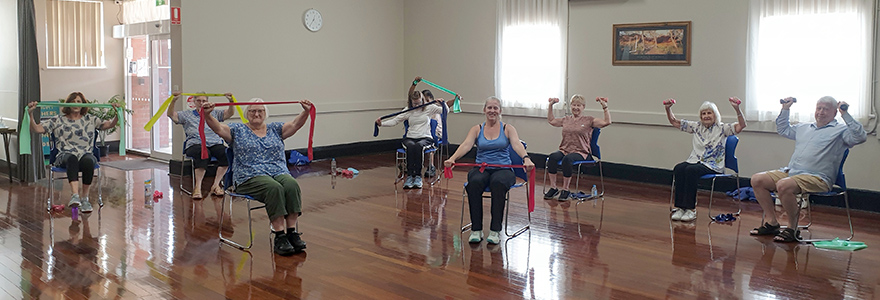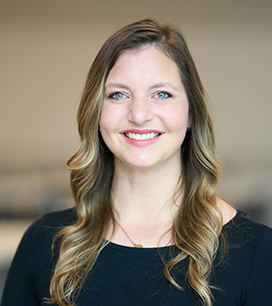Exercise and activity modification aid quality of life outcomes for osteoporosis

By Kim McCready
Osteoporosis is a disease marked by a significant decline in bone mineral density causing bones to become brittle and susceptible to fractures. And it’s more prevalent than many realize.
“Osteoporosis affects one in three women and one in five men, surpassing the combined prevalence of heart attacks, strokes and cancer among those over the age of 50,” said Tina Ziebart, a professor at Western University's School of Physical Therapy.

Tina Ziebart, School of Physical Therapy
Ziebart is among the few researchers with expertise in the development of exercise and physical activity interventions tailored for individuals with osteoporosis. Drawing on her background in kinesiology, she studies the mechanics of safely applying loads to the skeletal system, reducing the risk of fractures while still enabling physical activity.
Osteoporosis earned its nickname, the "Silent Thief," because it gradually erodes bone density without causing noticeable symptoms. It often remains undiagnosed until a fracture forces the issue to light. Adding to the challenge is the diagnostic process, which involves a bone mineral scan. In Ontario, insurance coverage of the scan typically begins at the age of 65, and as a result, many people may undergo a decline in bone density before they are made aware of it.
While exercise may not directly increase bone density, it plays a pivotal role in halting further decline. Prompt access to physiotherapy is helpful for patients to maintain as much bone density as possible.
“Typically, peak bone mineral density is attained around age 30, after which it steadily diminishes. Several factors contribute to the pace of this decline, leaving some individuals unsuspecting of their condition until they encounter their initial fracture, leading to a cascade of health complications,” Ziebart said.
The period following a diagnosis can be quite unsettling. Those dealing with osteoporosis frequently grapple with feelings of unease and anxiety, which heighten their perception of vulnerability and fragility. According to Ziebart, many individuals abstain from the physical activities and hobbies they used to love due to their fear of fractures. Using the findings of her research, she works to dispel these fears and empower those impacted with a sense of self-sufficiency.
"I love being able to give them their independence back – being able to say that yes, you can do any activity you want, let’s just modify how you're doing it,” Ziebart said.
Ziebart endeavours to bridge the gap between research and the aging community, making her findings accessible and relevant, empowering older adults with the knowledge of how exercise can benefit their lives.
“I've been collaborating with community partners, and as a result, I now teach an osteoporosis group exercise class based out of ReActive Physiotherapy in London,” she said. “There is a lack of available resources for people with osteoporosis following their diagnosis. We fill this gap by providing individuals with timely care.”
Bringing together small groups participants for exercise sessions provides an efficient approach to promoting physical activity, with the potential for substantial benefits in terms of improving bone health. And it offers more than that, it’s fostering a sense of community among individuals with osteoporosis in London.
“To ensure inclusivity, we've made sure to include a couple of men and grouped them together, so they don't feel out of place among a predominantly female group. We've also achieved a nice age range, with participants ranging from their mid- to late- 50s up to their early 90s," said Ziebart. "We intentionally avoid separating participants too much because it's truly inspiring to witness people's abilities and the value of exercise, regardless of age or gender. It's important to us.”
"I love being able to give them their independence back – being able to say that yes, you can do any activity you want, let’s just modify how you're doing it.”
Looking ahead, Ziebart aims to expand upon her prior research by conducting a more extensive randomized control trial study. One of her key objectives for future research is to seamlessly integrate evidence-based exercise interventions into healthcare settings such as hospitals and clinics. This endeavour is aimed at equipping healthcare providers with the knowledge and tools to facilitate timely and effective care for their patients.
“I hope to help doctors and other physiotherapists recognize the early signs of osteoporosis and proactively address them,” she explains.
Her long-term objective includes uncovering barriers to participation and devising strategies to overcome them. Ziebart emphasizes the significant value in encouraging all older adults to embrace even modest increases in physical activity. This constitutes a substantial knowledge translation initiative because although exercise recommendations are widely available and recognized as important, there's a gap in understanding why older adults often do not adhere to them. She also envisions expanding her research to encompass other populations where research has been scarce, such as individuals with spinal cord injuries and amputees, who also face compromised bone health.
"I am genuinely excited to be able to study bone mineral density and bone health in a variety of populations," said Ziebart. "Especially, focusing primarily on exercise as the key intervention."

